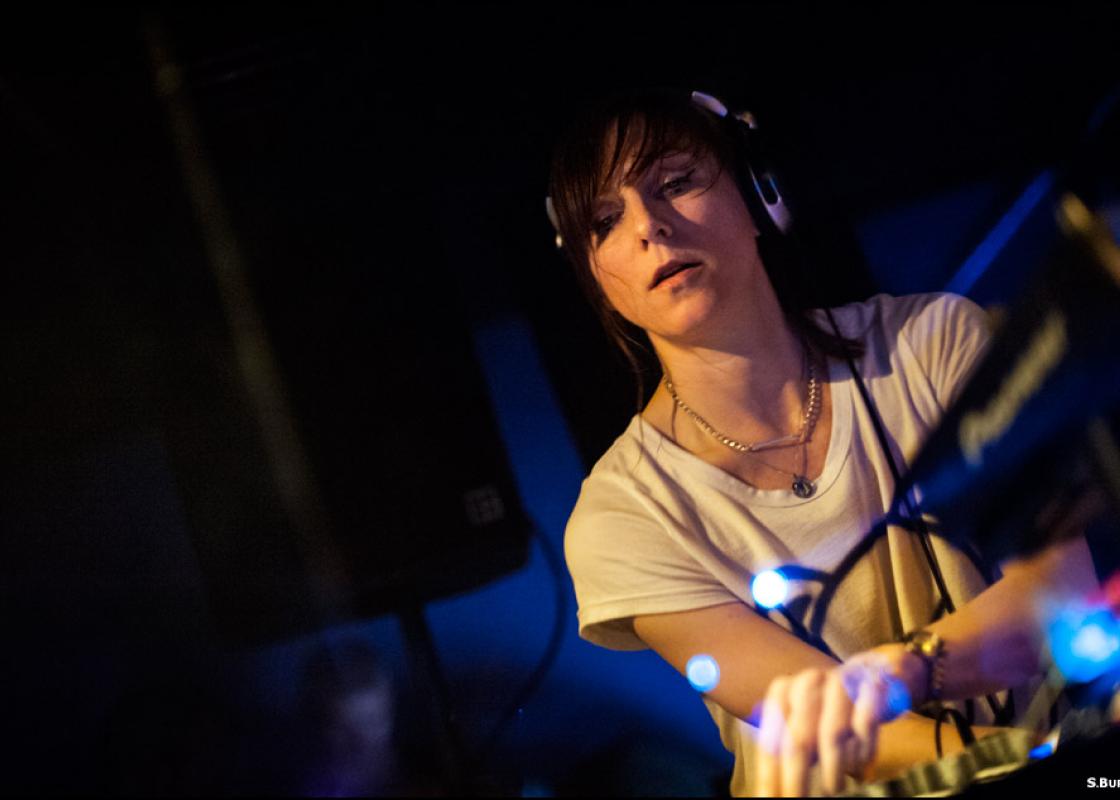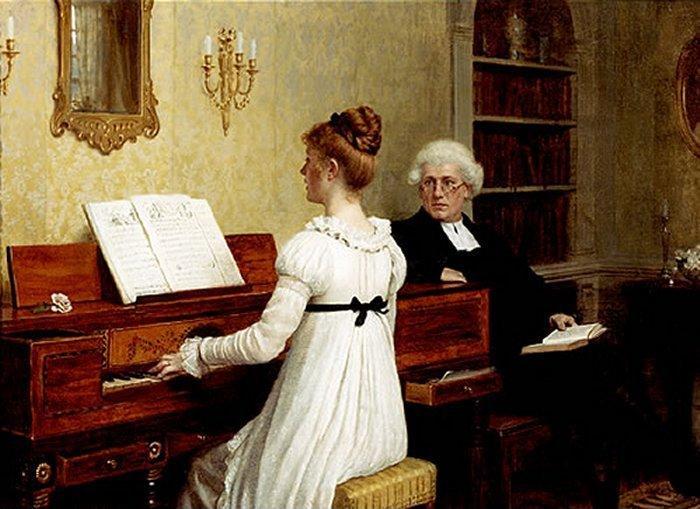There’s a long queue outside a major nightclub in Edinburgh, and many people are stopped by the bouncers. Some girls have dressed up to go clubbing after a few drinks. “Are you sure you’re in the right place, girls?” the bouncer asks, while directing the girls out of the queue. Why? They just didn’t fit in, as this particular club has a more serious “vibe”.
This is a typical situation taken from Tami Gadir’s fieldwork. She is a post-doctoral fellow at the Department of Musicology, the University of Oslo, and is researching women’s experiences in the electronic music scene. She is studying female DJs in particular, but in her experience, the gender differences pervade the electronic club scene in its entirety.
Gender discrimination along three dimensions
“What have you found so far in your research?”
“I have found that women as a general rule are marginalised in the electronic music scene. There are far more men than women DJs.”
“Then there is the discrimination in the settings they work in. This can be assumptions that they don't know how to use the machines properly. Or it can be actual harassment from either male colleagues or other people in the scene. Most women experience some discrimination. Some are more bothered than others, and some have developed strategies to care less about it.”
In addition, there are stereotypical ideas of women’s taste in music, and of what kind of music they produce and play, according to Gadir.
“There is this bizarre assumption that you can somehow predict what kind of music women will dance to. For example, it is assumed that women like music with vocals, or sounds that are ‘softer’ or in a higher register, better than the men on the dance floor do. Men, on the other hand, are presumed to like a more aggressive or hard sound, or deeper sounds. This connection between taste in music and gender is a very powerful myth that keeps being perpetuated.”
“The most common is to call upon metaphors to describe music. And often these metaphors imply gender.”
These are the three dimensions she has investigated: the lack of female presence on the nightclub line-ups, women’s uncomfortable experiences at work or on the dance floor, and the gendered symbolic language used to assess music.
Gender “in your face”
“I haven’t actually done any research on gender before,” says Gadir.

“In my last project I looked at what made people dance. But gender was in my face constantly. It was something that had to be written about. At one point it seemed completely unignorable, and to leave the gender dimension out of it would almost be criminal.”
Tami Gadir is originally from Australia, and she has her PhD from The University of Edinburgh. She has done fieldwork at clubs in Sydney, Edinburgh and Oslo, but she has also visited dance clubs all over the world as part of her research.
“What I saw as a visitor of dance clubs was that there were always fewer women than men DJing. But I was also made aware that both on the dance floor and as DJs, women experienced a sense of precarity. The clubs, the dance floors, and the night life scene make up an unsafe space, where women are being harassed, and even attacked.”
“The clubs, the dance floors, and the night life scene make up an unsafe space.”
DJing takes place during the night, and the audience is often intoxicated. The DJ’s physical position in the club is protected to various degrees, and Gadir gives examples of informants who have had to break their set due to harassment. One informant said that she had enough when the audience gathered into a mob repeatedly shouting for her to undress.
Tami Gadir is a DJ herself, and a fan of electronic dance music. What she found in her research corresponded well with her own experiences both as a DJ and as a clubber.
“Gender is completely unavoidable, because it is in your face the entire time,” she says.
See also: Cash's masculine vulnerability
Global project
In the club scene Gadir has studied, the DJs play electronically produced music for a dancing audience. It can be techno, house, drum’n’bass or EDM, from Kygo and Avicii at large, mainstream clubs to The Black Madonna or Cassy in more niche clubs.
Regardless of where you are in the world, you will find clubs playing this kind of music in the big cities. The most famous clubs are Berghain in Berlin, and the former Fabric in London.
“In Oslo the most important scenes for electronic dance music is The Villa and Jaeger, but I've also interviewed DJs playing more mixed music at less niche dance floors.”
“There is this bizarre assumption that you can somehow predict what kind of music women will dance to.”
Gadir’s research marks the beginning of a larger project. She wishes to provide a global overview of the electronic club scene, and the project’s thread is female DJs and an attempt to find some common features in their experiences.
The feminine sound myth
According to Tami Gadir, the myths about gender and music make up a self-fulfilling prophecy. For when you think that a certain type of music will make women dance, and women in fact are the first to come to the dance floor, the male DJ is happy. He then continues to spread the idea that women have a different taste in music than men.
“But does this really mean that there is a connection between gender and music?” Gadir wonders.
“Is there such a thing as a feminine sound?”
“No, there isn't. But, as there are cultural understandings of femininity and masculinity, there are musical sounds interpreted and described as feminine.”
“In the interviews I´ve done with different actors in the scene they would speak about a particular vocabulary of sound used to describe electronic music. This could be a technical language, describing how the music is produced. On the other hand, they used language comparing the electronic music to other musical instruments, like strings or drums. But the most common is to call upon metaphors to describe music. And often these metaphors imply gender.”
“People would say that girls like ‘fluffy’ sounds. Some even used the term ‘girly’, by which they often meant 'happy' or 'light' music that is easy to listen to. And surprisingly often, the term 'soulful vocal house' is mentioned, assuming that women like electronic music with soulful vocals.”
“The reason why it is like this is that we share a common vocabulary of masculinity and femininity. That's just how it is. I understood perfectly well what they meant. When someone said 'fluffy' or 'girly', I instantly understood what sounds they referred to. Even though I don't buy into the stereotypes, our cultural references are full of gender symbols.”
Gadir also found that the gendered vocabulary said something about the quality of the music.
“The feminine was always the aspect that made the music less legitimate. It lowered the standard and made it more accessible. Accessible could be understood as something positive, but what they really meant was to dumb it down. So putting girly sounds in your music would be to dumb it down.”
See also: Piano – the best suited instrument for the female body
Gender is a blind spot to male scholars
Gadir describes her last scientific article as a reaction to what has previously been written on the field. The club scene has often been described as particularly open and inclusive. She is highly critical to the lack of gender perspectives in the existing musicology research on club music.
“Writing about dance music as a scholarly topic is a relatively new phenomenon. The scholars have had to defend themselves from critique and forge a scholarly community, and therefore I can understand that they celebrate it as something special and unique. It can also be explained with the fact that the scholars are mostly fans; maybe that is why they avoid the darker issues. The fact that the music researchers often are men may be a reason why gender has become a blind spot.”
“Putting girly sounds in your music would be to dumb it down.”
Tami Gadir is particularly critical to the fact that the club scene has been described as exceptionally open and inclusive, and as a space for euphoric and transcendent experiences. At the clubs, dancing into the early hours is the goal for both DJs and the audience, but according to the researcher, the utopian experiences are rare and have received too much scholarly attention.
“Is there anything about the music itself that has contributed to this idea of the scene as particularly open and inclusive?”
“No. There is not something about the music in itself. Dance clubs have always been a space where people have experienced freedom. But experiences of euphoria or utopia, they are exceptional, not common. There are many women as well, who have had these experiences of utopia or connectedness, and this is a real thing. I don't mean to devaluate that. I just want to highlight that these are not the typical experiences on a mainstream dance floor. As in other music sub-cultures, women in general have been marginalised.”
Great variety in gender performances
“What are your informants’ strategies when they encounter the dominant ideas about femininity?”
“Some distance themselves from traditional ideas of femininity. But the gender performances among the informants are very varied. Some are consciously rebellious, whereas others are hyper-feminising themselves either as a statement or because they have to in order to get gigs. Whereas others dress down or even have a masculine style, and avoid playing music that is considered feminine. And then there are those who are queer, and for those, other 'rules' apply.”
“One of my informants costumes almost in the same way as Lady Gaga. She is very aware of gender dynamics and the gender dimension in her performance, and she uses her success as a platform to say something political about gender discrimination. She shows a lot of skin and uses fashion actively. She fluctuates between feeling that it is empowering and feeling that it is exploitative, but she likes the theatrical aspect of it.”

“Unfortunately, she deals with the worst types of comments and gender harassment by both men and women. It is a shame that there can't be a mutual support between women regardless of how they dress, but that some have to criticise women playing with a hyper-feminine appearance.”
Gadir emphasises that it is difficult to talk about a common female experience as a DJ. The experiences of challenges and strategies are too varied and complex.
“It has a lot to do with branding. Either you’re a feminine woman or a masculine woman. It is highly polarized. This is different if you’re an already established name who has a high profile. The gendered branding does not apply in the same way. But it takes a long time to get there.”
She explains that there is also a stereotypical masculine man in the mainstream culture, and the male DJs are branded according to this image. As such, there isn’t much leeway for men either. Ideally, they should look like the type of man we know from Hollywood and popular culture. But there is a large queer scene, and there you’ll encounter many different gender representations.
See also: Booty shake or guitar riff?
DJ = man?
The title DJ is masculine by default, according to Tami Gadir.
“When someone says DJ you automatically picture a man.” She says that when female DJs turn up for a gig they’re often asked what they’re doing there, if they’re the DJ’s assistant or girlfriend.
“What can be done to change this?”
“The numbers are important. The share of women must increase. Other strategies include making club policies non-discriminatory and providing consequences for those who misbehave in terms of gender discrimination or harassment. Most important is a cultural shift, which has to come alongside the changing of the numbers. Otherwise, you're dealing with the symptom and not the cause. But a really awesome starting point would be policies that say bookers have to have a certain share of women in the line-up. That would probably have a domino effect. The niche clubs seem better at this than the mainstream clubs, and it could be interesting to find out why.”
In her research, Gadir has found that most commonly one in four names on the line-up is female. But a shift is about to happen, and according to Gadir, the development in Norway is particularly positive.
“Although it is still the assumption that the DJ is a man, my experience is that people are not as surprised or estranged by women in the DJ booth as they used to be.”
Source: Resistance or Reiteration? Rethinking Gender in DJ Cultures, Tami Gadir, Contemporary Music Review 1 2016.
Translated by Cathinka Dahl Hambro


